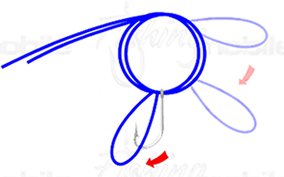
For an amateur fisherman or fishing enthusiast the endless number of fishing knots can be a little too overwhelming. How does one decide on what knot to master so that it will help in his fishing escapade? Only the seasoned fisherman knows what works best and when. It has of course taken a lot of practice and years of experience to have mastered them to perfection.
Good fishing knots and sharp hooks are the crucial factors when it comes to fishing. A good fishing knot ideally should retain the full breaking strength of the line as if it never had a knot in it! And from among the so many types of knots, an angler actually needs perhaps no more than three or four basic knots. And this knot holds the key to the difference between boating a big fish, or just losing it. It is the weakest link between the fisherman and his trophy fish.
Albright Knot, Bimini Twist, Blood Knot, Palomar Knot, Pitzen Knot, Turtle Knot, World Fair Knot are all examples of some fishing knots. There are knots for line to line connection, for making terminal connections, loop to loop connections, doubling the terminal end of a fishing line and many more. There are also knots for attaching lures and hooks, knots for making loops and the list goes on.
Not all knots are useful to everyone in the same way. It is thus better to select a few knots that actually suits somebody and then practice tying them over and over again so that it becomes a second nature to one. However it is smart to use those knots which can be tied in an easily remembered manner. There are a number of ways of learning how to tie knots, do little research on the web, ask a friend who is into fishing if he could guide you, or get your grandfather or uncle who is a veteran fisherman to help you out in this regard.
It often happens that a knot tied by a fisherman is not quite liked by another fisherman; he will most likely untie it and tie it up again! Then again, there are some who would want to wet a fishing line knot before pulling it tight. This actually does not help, but at the same time, some do wet the knot in order to pull it tighter. Once the knot has been tied, the tag ends must be trimmed which are close to the knots.
For an angler, a good fishing knot is not too difficult to remember nor too complicated to implement. And only a handful of these knots will do just about anything an angler might need. Among the various fishing knots, Clinch Knot, Double Clinch Knot, Palomar Knot, Blood Knot, Uniknot or Hangman's Knot, No Slip Loop Knot are the most common.
At first, the knots might seem a little confusing and complicated and also difficult to remember but once you narrow down to what type of knots you prefer and practice them till you are familiar with it, it will come to you naturally.
Article Source: http://www.articlesbase.com/fishing-articles/master-the-art-of-tying-fishing-knots-5265776.html
About the AuthorAs an expert fisherman himself, Allan Simons wants to help out other fishing enthusiasts by writing helpful articles about the different types of knots; especially fishing knots.

